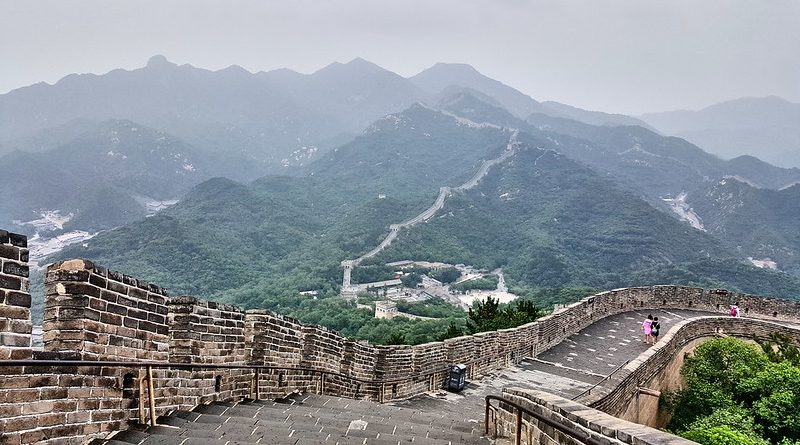The Great Wall of China
Standing tall, mighty, and unmoved over millennia, the 4,000 miles (6,500 km) long Great Wall of China is an architectural wonder of epic significance.
Snaking along through hills, plains, deserts, and swamps, with an average height of 25 feet and housing 25,000 watch towers (beacons) along the course, this robust man-made barricade was started from scratch by the Qing Dynasty in the 5th century BC.
The wall forms the major portion of the entire built structure. It stands to a height ranging between 20 to 30 feet (6 to 9 meters). The width at the base stretches to 21 feet (6.5 meters) and tapers to 19 feet (5.8 meters) at the top.
High bastions or signal towers. Were placed 18 kilometers apart from each other, and usually located on hilltops . They were used to transmit military information and communication. Smoke signals were used during the daytime and fire/lantern (beacon) was used in the nights.
Built along an arc that roughly demarcates Mongolia from China, the Great Wall is the largest ever built structure in terms of mass and surface area. The Chinese had learned the techniques of building heavy-duty walls during the ‘Warring States Period’ of the 5th century BC. The states of Yan, Qi, and Zhao constructed massive fortifications to protect their borders.
When Qin Shi Huang conquered numerous states and unified China under his empire in 221 BC, he demolished previous walls that separated the states and instead ordered the construction of new walls on the northern front to keep away the Mongols. Given the scale and dimensions of the wall, transportation of such large quantities of raw materials was not feasible. Therefore, local resources were heavily used. Stones were used for construction over mountainous areas where they were plenty, while rammed earth gave shape to the walls in the plains.
In the later period, different dynasties like the Han, Jin, and Sui repaired, renovated, or expanded different sections of the Great Wall to serve as the first line of defense from the northern invaders. In 1449, after the Ming army’s defeat at the hands of the Mongols, a massive reconstruction of the Great Wall was ordered. The Mings constructed stronger walls and reinforced previous sections by using stone and bricks.
Sections closer to Beijing, the throne of the Ming dynasty, were especially reinforced to the point of making them impenetrable by any means.




